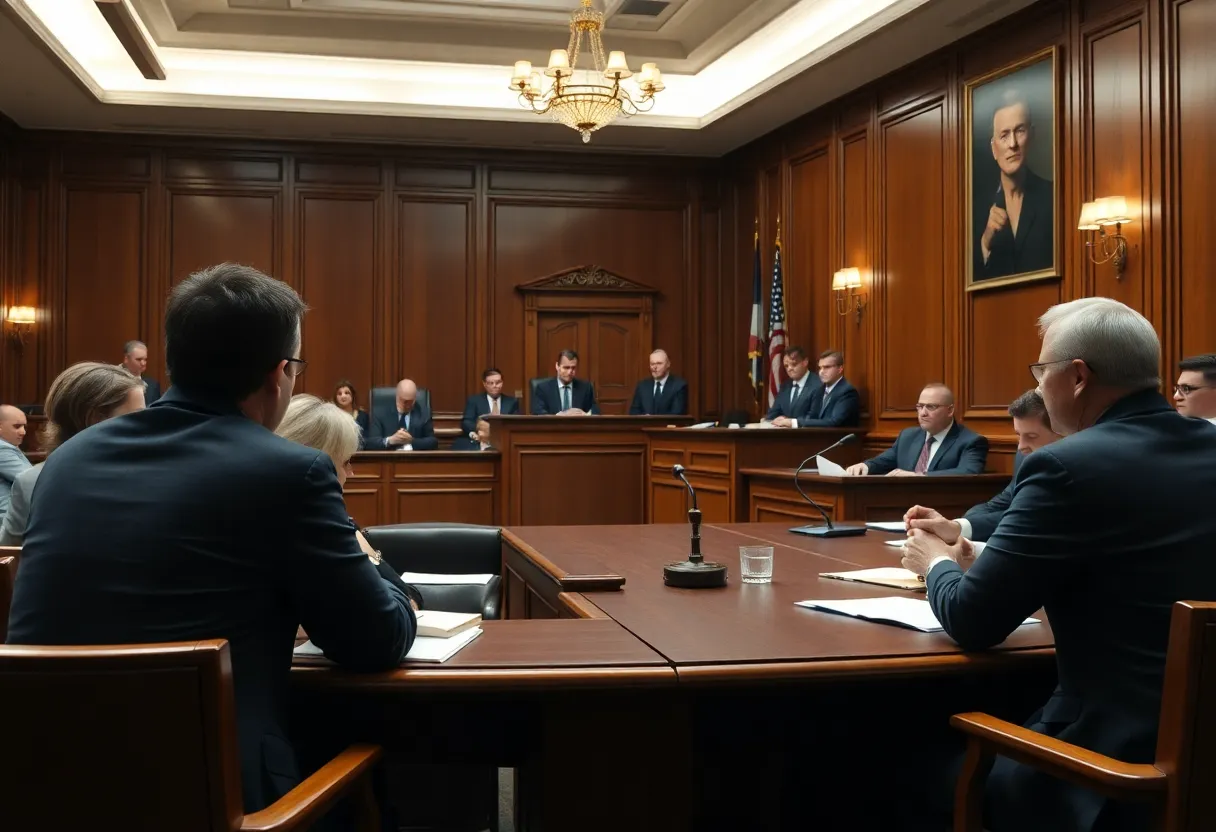Buffalo, October 7, 2025
A retrial in Buffalo for the suspect in a 1993 murder case ended with a deadlocked jury, prompting a mistrial. Prosecutors aim to retry the case as the victim’s family seeks closure after over 30 years. The situation highlights ongoing challenges in cold cases and advocates’ calls for improved forensic resources to support future investigations.
Buffalo: Retrial in 1993 Murder Case Ends in Deadlocked Jury
In Buffalo, a retrial for a suspect in a 1993 murder case concluded with a deadlocked jury, resulting in a mistrial. The jury, after several days of deliberation, was unable to reach a unanimous verdict, marking a significant development in this long-standing cold case.
Prosecutors have indicated their intention to pursue another trial soon, despite the setback. This decision underscores the ongoing efforts to resolve cases from decades past. The victim’s family, who have sought closure for over 30 years, expressed gratitude to the community for its continued support during this challenging time.
Legal experts have pointed out that the outcome highlights the challenges in prosecuting cold cases, such as the degradation of evidence and difficulties in gathering reliable testimony after many years. Community advocates are pushing for enhanced forensic resources to help avoid similar stalemates in future investigations. The suspect remains in custody as the court considers next steps.
This development has sparked renewed public interest in unresolved crimes from Buffalo’s history. Discussions among local historians suggest that crime waves in the 1990s played a key role in shaping the city’s current safety initiatives, emphasizing the need for improved law enforcement strategies and community involvement.
Details of the Case and Proceedings
The retrial focused on evidence related to the 1993 murder, which has been revisited due to advances in investigative techniques. Despite these efforts, the jury’s inability to agree on a verdict led to the mistrial declaration. This is not uncommon in complex cases, but it prolongs the wait for justice for those affected.
Prosecutors’ plans for a retrial demonstrate their commitment to the case, though no specific timeline has been announced. The victim’s family has been vocal about their appreciation for community backing, which has helped them navigate the emotional toll of the proceedings.
Experts in the legal field note that cold cases often face hurdles like faded memories and outdated forensic methods. In response, advocates are calling for investments in forensic resources, such as better DNA analysis tools, to strengthen future prosecutions. This could potentially reduce the likelihood of deadlocked juries in similar situations.
Broader Context and Implications
The 1993 murder is part of a larger pattern of unsolved crimes in Buffalo during the 1990s, a period marked by increased violence that influenced local policies. Historians explain that these events prompted the development of modern safety initiatives, including community policing programs and enhanced crime prevention efforts that are still in place today.
Public interest in this case has grown, with many residents hoping it will lead to broader reforms in how cold cases are handled. By examining past failures, Buffalo’s law enforcement agencies may refine their approaches, ensuring that justice is served more effectively in the future.
This mistrial serves as a reminder of the complexities involved in revisiting old crimes, but it also highlights the resilience of the community and the legal system in seeking resolution. As discussions continue, there is optimism that improved resources and strategies will address these challenges head-on.
The story of this retrial not only reflects the specific details of the 1993 case but also contributes to ongoing conversations about crime and justice in Buffalo. With the suspect still in custody, the path forward involves careful planning to avoid another impasse, potentially setting a precedent for handling similar cases nationwide.
In the broader landscape, cold cases like this one often require collaboration between various agencies, including local police and forensic experts. The emphasis on forensic resources stems from the need to handle evidence meticulously, especially when years have passed. For instance, advancements in technology could play a pivotal role in future retrials, allowing for more accurate analysis of evidence that was previously inconclusive.
Community advocates stress that enhancing these resources is essential not just for this case but for all unresolved matters in Buffalo. This could involve training programs for investigators or partnerships with national organizations specializing in cold case resolution. Such measures might help prevent the kind of deadlocks that have frustrated efforts here.
Looking back, the 1990s crime waves in Buffalo were a catalyst for change, leading to initiatives that reduced crime rates over time. Historians point out that these efforts included neighborhood watch programs and increased funding for police departments, which have contributed to the city’s safer environment today. The current situation with the 1993 case underscores the importance of building on these foundations to ensure no stone is left unturned in the pursuit of justice.
As Buffalo moves forward, the focus remains on supporting affected families and improving the systems in place. This mistrial, while disappointing, offers an opportunity to refine approaches and recommit to resolving past wrongs, fostering a sense of closure for the community.
FAQ Section
Below is a frequently asked questions section based on the key facts from this article.
What happened in the retrial of the 1993 Buffalo murder suspect?
The retrial ended in a deadlocked jury, leading to a mistrial.
What are prosecutors planning to do next?
Prosecutors plan to retry the case soon.
How has the victim’s family responded?
The victim’s family issued a statement thanking the community for support.
What do legal experts say about this outcome?
Legal experts note this outcome highlights challenges in cold case prosecutions.
What are community advocates calling for?
Community advocates are calling for improved forensic resources to prevent such stalemates.
What is the status of the suspect?
The suspect remains in custody pending further court decisions.
How has this affected public interest?
This development has reignited public interest in unsolved crimes from Buffalo’s past.
What role did 1990s crimes play in Buffalo?
Local historians are discussing how 1990s crime waves shaped the city’s current safety initiatives.
Key Features Chart
Below is a simple chart outlining the key features of this news event, based on the article’s content.
| Feature | Description |
|---|---|
| Event Outcome | Mistrial due to deadlocked jury |
| Prosecutors’ Plan | Retry the case soon |
| Victim’s Family Response | Thanked the community for support |
| Legal Experts’ View | Highlights challenges in cold case prosecutions |
| Community Advocacy | Calling for improved forensic resources |
| Suspect Status | Remains in custody |
| Public Interest | Reignited interest in unsolved crimes |
| Historical Context | 1990s crime waves shaped current safety initiatives |
Deeper Dive: News & Info About This Topic
HERE Resources
Buffalo State Student in Stable Condition After Shooting
Buffalo Retrial in 1993 Murder Case Results in Deadlocked Jury




